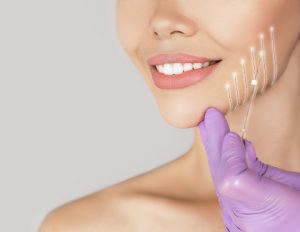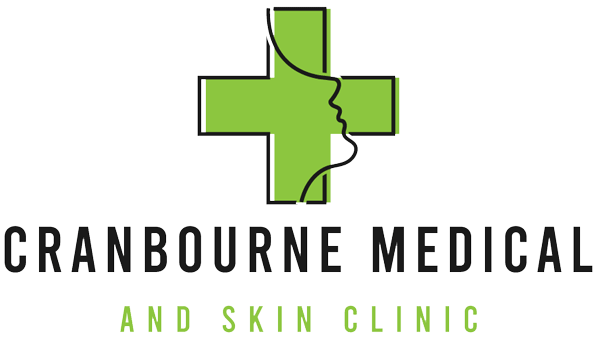
Thread lifts are a modern cosmetic procedure designed to lift and tighten sagging skin. This minimally invasive technique uses specialised threads inserted under the skin to create a subtle lifting effect. As the threads dissolve over time, they stimulate collagen production, enhancing your skin’s overall appearance.
Unlike traditional facelifts, thread lifts require minimal downtime and can be performed in an office setting. The results are immediate but continue to improve as the body naturally heals and rejuvenates itself. Patients often appreciate this balance of instant gratification with long-term benefits.
Ideal for individuals seeking non-surgical options, thread lifts cater to various areas such as the face, neck, and even décolletage. This versatile treatment offers an effective solution for those looking to achieve a refreshed look without undergoing major surgery or extensive recovery periods.
Types of Thread Lifts
Thread lifts come in various types, each designed to address specific concerns and areas of the face or body. One popular option is the PDO (Polydioxanone) thread lift, known for its biocompatibility and ability to stimulate collagen production. These threads dissolve naturally over time, resulting in a gradual improvement in skin texture.
Another type includes PLLA (Poly-L-lactic acid) threads. They offer longer-lasting results by promoting deeper collagen formation beneath the skin. This can lead to more significant lifting effects and volume restoration, making them ideal for patients seeking extended benefits.
There are cog threads that feature barbs or hooks along their length. These provide additional anchoring points when inserted under the skin, allowing for a more pronounced lift effect. With multiple options available, it’s essential to choose one that aligns with your aesthetic goals and desired outcomes.
Duration and Candidates for Thread Lifts
Ideal candidates for thread lifts include people in their 30s to late 50s who have mild to moderate skin laxity. This treatment is particularly effective for enhancing contours around the jawline and cheek area. It’s also suitable for those looking to improve sagging skin without undergoing invasive surgery.
Before committing, potential candidates should consult with a qualified practitioner. An assessment will determine if this procedure aligns with individual goals and skin type characteristics. It’s essential to discuss any medical history or underlying conditions that could affect candidacy or outcomes.
Preparing for a Thread Lift
Preparing for a thread lift involves several important steps to ensure the best results. First, schedule a consultation with your provider to discuss your goals and expectations. This will help you understand what the procedure entails and if you’re a good candidate.
Next, be sure to disclose all medications, supplements, or herbal remedies you are currently taking. Some may increase bleeding risk during the procedure. Your doctor may recommend avoiding blood thinners like aspirin or ibuprofen at least one week prior.
Maintain hydration and follow any pre-procedure instructions given by your healthcare professional. Arranging for someone to accompany you can also ease transportation after the appointment since some swelling or discomfort might occur post-procedure. Preparing well sets the stage for a smoother experience ahead.
Procedure Walkthrough
During your thread lift appointment, you’ll first meet with a licensed practitioner who will discuss your goals and concerns. They may take photos for reference and mark areas where the threads will be inserted. This personalised consultation helps ensure you get the desired outcome.
Next, a local anaesthetic is applied to minimise discomfort during the procedure. After the area is numbed, fine threads are carefully inserted under your skin using a thin needle or cannula. The practitioner will gently pull on these threads to create an immediate lifting effect while securing them in place.
The entire process typically takes about 30 to 60 minutes, depending on the areas being treated. You may feel some tugging sensations but should experience minimal pain thanks to the anaesthesia. Once completed, you’ll have time to rest before heading home with aftercare instructions tailored just for you.
Post-Procedure Recovery
After your thread lift, recovery is generally swift and straightforward. You may notice some swelling or bruising at the treatment site. This is normal and usually subsides within a few days. Applying cold compresses can help alleviate any discomfort.
Most patients can resume their daily activities quickly, but it’s essential to avoid strenuous exercise for at least a week. Keeping your head elevated while sleeping can also aid in reducing swelling during the initial recovery phase.
Maintain regular follow-ups with your practitioner to monitor progress. They’ll provide tailored advice on skincare routines and treatments that are safe post-procedure. It’s important not to rush into heavy skincare products or makeup until you receive guidance from your provider, as this will help ensure optimal healing and results.
Risks and Side Effects
Like any cosmetic procedure, a thread lift comes with potential risks and side effects. Although generally considered safe, some patients may experience discomfort or bruising at the insertion sites. This tenderness usually subsides within a few days.
Another concern is the possibility of asymmetry or visible threads beneath the skin if not performed by an experienced practitioner. In rare cases, infections could occur, necessitating prompt medical attention to ensure proper healing.
It’s also important to note that allergic reactions can happen, especially if your skin is sensitive to materials used in the threads. Always communicate openly with your healthcare provider about any past reactions or concerns before undergoing treatment. Being informed helps create realistic expectations for your results while prioritising safety.
Follow-Up Care and When to Seek Medical Help
After your thread lift, follow-up care is essential to ensure the best results. Your provider may schedule a check-up within a week or two post-procedure. During this visit, they will assess your healing process and address any concerns you may have. It’s vital to keep these appointments for optimal outcomes.
Pay attention to how you’re feeling in the days following the procedure. Mild swelling or bruising is typical, but if you notice severe pain, excessive swelling, or unusual discharge from the incision sites, it’s crucial to reach out to your healthcare professional immediately.
Don’t hesitate to contact your provider if something feels off. Early intervention can prevent complications and ensure that you achieve the desired effects of your thread lift while maintaining overall health and safety during recovery.
Cost and Longevity of Thread Lifts
When considering a thread lift, understanding the costs involved is essential. The price of a thread lift can vary significantly based on factors such as location, provider expertise, and the specific technique used.
As for longevity, results typically last between 12 to 24 months. Individual outcomes may depend on skin type and age. Some patients choose follow-up treatments to maintain their desired appearance.
Investing in your aesthetic goals with a thread lift offers both immediate satisfaction and lasting effects when done correctly. Researching qualified practitioners ensures that you receive quality care tailored to your needs while maximising the benefits of this innovative procedure.
